


Title: Impact of chronic hepatitis on DC/T cell functions in viral infections
PhD Student: Lisa Assmus (completed)
A common clinical complication in patients with liver cirrhosis is exacerbation to viral and bacterial infections, which often persist in these patients. Yet, the underlying cellular and molecular mechanisms have not been elucidated. Using the murine bile-duct ligation and the carbon tetrachloride model for the induction of liver fibrosis, we have demonstrated that liver cirrhosis rendered mice more susceptible to viral LCMV infection and that these mice were not able to clear the virus leading to persistent infection, recapitulating the situation in humans. This indicates that cirrhosis negatively affects systemic anti-viral host defence and the clearance of viral infections. In this project we aim to unravel the impact of chronic liver inflammation on the anti-viral immunity. Using LCMV and influenza A virus (IAV) infection models we will investigate the impact of liver cirrhosis on the phenotype and function of antigen presenting dendritic cells (DCs) and virus specific CD8+ and CD4+ T cells, which are crucial for the control of viral infections. By joining the expertise of Abdullah on chronic inflammation in the liver and LCMV infection models with that of La Gruta on IAV infection models and CTL responses we aim to elucidate the cellular and molecular mechanisms underlying the impaired anti-viral immune responses in cirrhosis. We will clarify how chronic liver inflammation may affect viral antigen presentation by DC and its impact on induction, expansion and function of CD4+ T helper cells and cytotoxic CD8+ T cells. The results of these studies will give insight into how chronic inflammation promotes viral persistence and could lay the groundwork for generating novel options for treatment of chronic viral infections.


Title: Increasing Plasmodium immunogenicity during liver stage infection to induce protective CTL immunity against Malaria
PhD student: Ana Maria Valencia Hernandez (completed)
With over 580.000 deaths each year, mostly of children, malaria remains a major scourge to public health worldwide (WHO report 2014). Intriguingly, the seemingly ideal preventative measure already exists, i.e. a vaccine established using small animal models that was recently shown to be protective in humans (Seder et al. 2013). Intravenous injections of live γ- irradiated plasmodium parasites (sporozoites) achieve sterilising immunity mediated by cytotoxic T-cells, thus controlling the infection already during the initial liver stage. Unfortunately, obtaining the currently required amounts of sporozoites from mosquito salivary glands is too cumbersome for routine use in places where the vaccine is most needed. Therefore, alternative protocols aimed at increasing sporozoite immunogenicity during T-cell priming and subsequently during expansion and differentiation in the liver are warranted.
The Barchet lab focuses on unravelling innate immune pathways of pathogen detection, and contributed to the discovery that the cytosolic helicase MDA-5 is a key immune receptor in plasmodium infected hepatocytes. Moreover, they recently showed that oxidative damage increases cGAMP synthase (cGAS) and a STING mediated immune response to pathogen DNA. Based on these findings, they developed novel agonists of these pathways as vaccine adjuvants.
The Heath laboratory combines leading expertise in T cell and DC biology, with a long-standing interest in studying the protective T cell responses to malaria infection. The group has generated CD4+ and CD8+ T cell hybridomas and T-cell transgenic mice specific for Plasmodium antigen, which can facilitate study of the immune response to this pathogen.
Based on the complementary tools established in both laboratories, and by modulating the attenuation protocol (e.g. oxidative, chemical and/or genetic modification of parasite DNA), as well as the vaccine adjuvants employed, we will study (A) the identity and the maturation state of the myeloid cell type presenting sporozoite antigen during T cell priming in lymphoid tissue, (B) the immunogenicity of sporozoite-induced hepatocyte cell death, and parasite antigen presentation by myeloid cells taking up the dying hepatocytes, and approaches of liver-targeted boost vaccine delivery to (C) attract, expand and (D) differentiate sporozoite antigen specific T cells. Given recent understanding that tissue-resident memory T cells (TRM) represent the first line on defence in many tissues, our goal will be to direct immunity towards their formation. The long-term goal is to (E) extrapolate from these approaches a lymphoid tissue directed prime, and a liver APC targeting boost vaccination protocol as a proof-of-concept in mice that requires fewer sporozoites to achieve TRM mediated protective immunity against malaria.

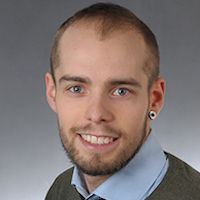
Title: Identification of malaria antigens for incorporation into blood-stage and liver-stage vaccines
PhD student: Matthias Enders (completed)
Plasmodium species, the infectious agent responsible for malaria, have a complex life cycle that involves two replicative stages in mammalian hosts. After introduction into the skin by a mosquito during a blood meal, sporozoites migrate to the liver where they undergo replication in hepatocytes. Their second stage of replication occurs when merozoites are released from the liver into the blood to cause cyclic infection of erythrocytes. Both stages of infection are susceptible to control by the immune system. For the liver stage, tissue-resident CD8 T cells are critical for killing infected hepatocytes, while for blood-stage infection, antibody is the main effector mechanism. Immunity to both stages depends on CD4 T cells, which provide help for responses by CD8 T cells and B cells but also have inherent capacity to control blood-stage infection, most likely through cytokine production. To study the role of CD4 T cells in malaria immunity, we have generated a CD4 T cell receptor (TCR) transgenic line with specificity for an antigen expressed throughout the Plasmodium life-cycle. CD4 T cells from this line are able to help both CD8 T cells and B cells and show capacity to control infection independent of these additional cell types. Our recent discovery of the antigen recognised by this TCR specificity provides the basis for assessment of its potential in vaccination. In this project, we aim to monitor immunity to this novel antigen during Plasmodium infection and test its immunogenicity in various vaccination strategies designed to generate immunity to either the liver or blood-stages of the Plasmodium life-cycle.


Title: Influence of intestinal migratory DCs on the immune defence against Salmonella infection
PhD student: Anna Erazo (completed)
Myeloid cells are of major importance for the transmission of invasive Salmonella strains from the intestine to the mesenteric lymph nodes (mLN), as well as liver and spleen. From the mouse model of typhoidal Salmonellosis, which is based on oral infection of mice with Salmonella enterica serovar Typhimurium, it is known that CD103+ migratory dendritic cells (DC) are preferentially infected with Salmonella and migrate to the mLN to induce protective T cell responses. In this project, we would like to bring together the complementary expertise of the Strugnell lab in Salmonellae-driven infection models and of the Förster group in myeloid cell function and migration to study the potential of CCL17+CD103+ intestinal DC to induce potent adaptive immunity to Salmonella. Specifically, we want to explore the ability of the chemokine CCL17 and the proinflammatory cytokine GM-CSF to induce activation and migration of Salmonella infected DC, and study the influence of these mediators on the antigen-presenting function of infected DC. We will use Salmonella vaccine strains expressing the model antigen Ovalbumin to quantify CD4+ and CD8+ T cell responses as well as B cell immunity. Our long-term goal is to employ the newly gained knowledge on the functional relevance of CCL17-expressing DC in Salmonella infection to improve future vaccination strategies.


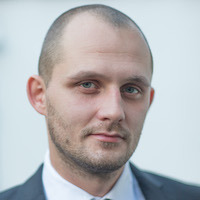
Title: The activation and fate of Salmonella-specific CD4+ T cells in murine Salmonellosis
PhD student: Adrian Semeniuk
Work by us and others over recent years has reaffirmed the importance of CD4+ T cells in immunity against the murine model of invasive Salmonellosis. The C57BL/6 mouse is extremely sensitive to Salmonella Typhimurium (i.v. LD50 <10 bacteria) but the mouse can be vaccinated to immunity using a live-attenuated vaccine known (TAS2010 or BRD509). This immunity is largely conferred through CD4+ T cells. The specificity of the protective T cell response is poorly described, but recent work by Nancy Wang, using peptide eluted from MHC Class II molecules from Salmonella-infected DCs, has revealed novel epitopes that engage much stronger CD4+ T cell recall responses in vaccinated mice, than those for previously-characterised Salmonella epitopes. These earlier epitopes were identified in the bacterial flagellin or the SPI-2 proteins SseI and SseJ. Adrian is currently fine mapping the Wang epitopes. Once the Wang epitope specific 'registers' are established, Adrian will collaborate with the Rossjohn Laboratory (Monash University) to use these epitopes to create novel MHC Class II tetramers to identify Salmonella-specific T cells. These tetramers will return with Adrian to Bonn to assist in studies aimed at tracking the early activation and migration of Salmonella-specific CD4+ T cells in the murine model.


Title: Interplay between myeloid and T cells for anti-bacterial lung immunity
PhD student: Victoria Scheiding (completed)
Myeloid cells are instrumental for antigen-specific priming of naive T cells. In addition, inflammasome activation in myeloid cells results in a rapid, innate-like activation of memory T cells. We have recently observed that innate activation of pulmonary T cells results in IFN production and control of bacterial pulmonary infection. In order to clarify the role of myeloid and T cells in the control of pulmonary bacterial infections, we will use the model of Legionella pneumophila, which causes Legionnaire’s disease in humans - a serious and often fatal community-acquired pneumonia. Alveolar macrophages (AM s) and, in humans, epithelial cells are targets for L. pneumophila infection, although the involvement of inflammatory cells is unclear. Inflammasome activation, particularly NLRC4 and NLRP3, IFN and T cells are key components of the early control of L. pneumophila infection. However, the regulation of myeloid cell activation in vivo and the interplay between these cells and memory T cells in conferring protection is not understood. Here we propose to combine the expertise of Garbi on DCs and T cell responses with that of van Driel and Hartland on L. pneumophila infection to define cellular and molecular events between myeloid and innate-like memory T cells that result in protective host responses. Using advanced flow cytometry, confocal imaging and functional cellular assays, we will investigate (i) the infection kinetics in myeloid cells, (ii) how this impacts inflammasome activation in vivo, (iii) how Legionella transcriptionally affects myeloid cells, and (iv) the contribution of innate activation of memory T cells in resolving the infection. These studies will highlight key mechanisms controlling L. pneumophila replication and may contribute towards new therapeutic strategies.

Title: Interferon mediated control of Legionella infection
PhD student: Markus Fleischmann (completed)
Our recent work, and that of others, has shed a great deal of light on the cellular and molecular interactions that contribute to bacterial clearance in the lung during the innate phase of the response. The broad aim of future work is to investigate the molecular mechanisms by which IFN drives clearance of L. pneumophila from the lung and to establish why macrophages support rather than inhibit intracellular bacterial replication in the presence of IFNγ. This work builds on our new data suggesting that MCs are the primary responders to IFNγ production during L. pneumophila infection and that IFNγ drives a bactericidal response by upregulating the expression of guanylate binding proteins (GBP) and immunity-related GTPases (IRGs). In addition, we found that in vivo, L. pneumophila infected alveolar macrophages downregulate the expression of the IFNγ receptor (Ifngr1) rendering them refractory to IFNγ stimulation. In contrast, MCs maintain Ifngr1 expression and are thus bactericidal. We hypothesise that because macrophages play crucial roles in tissue homeostasis, these cells down regulate Ifngr1 expression, and possibly other cytokine receptors, to restrain inflammation and tissue pathology. This inadvertently makes macrophages a protected replicative niche for intracellular bacterial pathogens. In addition, we will investigate how cigarette smoke serves to influences the activities of immune cells in the lung during bacterial infection. Our preliminary data shows that smoking influences the ingress of immune cells into the lung and the ability of cells to kill bacteria and support their replication.


Title: Identification of host restriction factors that block respiratory virus infection
PhD student: Lara Schwab (completed)
Influenza and other viruses are an important cause of respiratory infections in humans. Respiratory viruses predominantly infect airway epithelial cells (AEC), resulting in productive virus replication. Many viruses, including seasonal influenza A virus (IAV), respiratory syncytial virus (RSV), parainfluenza viruses (PIV) and rhinovirus (RV) also infect airway macrophages (AMΦ), however replication is generally abortive and infectious progeny are not released. Of interest, highly pathogenic avian influenza (HPAI) H5N1 overcome this block and grow in AMΦ. We have shown that following seasonal IAV infection, both AEC and AMΦ rapidly induce thousands of genes, including hundreds of interferon stimulated genes (ISGs). While antiviral activity has been demonstrated for a small subset of ISG proteins, the vast majority have not been functionally characterised. Moreover, the specific host proteins that block respiratory virus replication in AMΦ are not known. We have identified a number of host-encoded proteins that can block infection and/or growth by a range of important human respiratory viruses, including seasonal IAV, RSV, PIV-3, RV and human metapneumovirus (HMPV). In addition, we have mapped growth of HPAI H5N1 in AMΦ to its hemagglutinin gene and identified at least one host factor that blocks seasonal, but not HPAI virus growth. Current projects aim to define the mechanisms by which specific host-encoded factors antagonise and block respiratory viruses and how virulent strains evade these host defences. This represents an important step towards the development of therapeutics targeting host cell proteins to control respiratory virus infections.
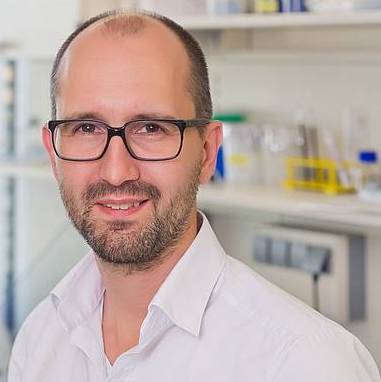

Title: Role of XCL1 on DC migration in acute viral infections
PhD student: Sabrina Dähling (completed)
The adaptive immune system consists of T and B cells that specifically react against a diverse set of pathogens. Before naïve T lymphocytes can differentiate into an efficient force that protects the host from microbial attacks, they require instruction by dendritic cells (DC). DC not only process and present foreign antigens via MHC molecules to allow for the activation of specific T lymphocytes, but also integrate inflammatory cues and microbial signals induced by the invading pathogens into this process. Recent data indicates that chemokines optimize T-cell/DC encounters and shape the differentiation of cytotoxic CD8+ T cells. One chemokine receptor, XCR1, is exclusively expressed by a subset of DC that induce antiviral immunity. Its only ligand is XCL1, which is produced by activated NK cells, Th-1 and CD8+ T cells. In vitro, DC show chemotactic activity towards XCL1, supporting the notion that XCL1 acts as a chemokine. However, the in vivo function of the XCL1-XCR1 axis is largely unknown. In this project, we aim to elucidate the factors that induce XCL1 and how XCL1 regulates the positioning and migration of XCR1 expressing DC in vivo in the steady state and after viral and bacterial infections. We will also investigate the role of another chemokine receptor, CXCR3 that is exclusively expressed on XCR1 DC. Using advanced flow-cytometry, extensive functional analyses, intravital microscopy and histocytometry based on multicolour confocal images from tissue sections, this project will provide novel insights into the role of XCR1 and CXCR3 in immunity. Such detailed analyses will have direct relevance for vaccine design and anti-tumour immunotherapy.

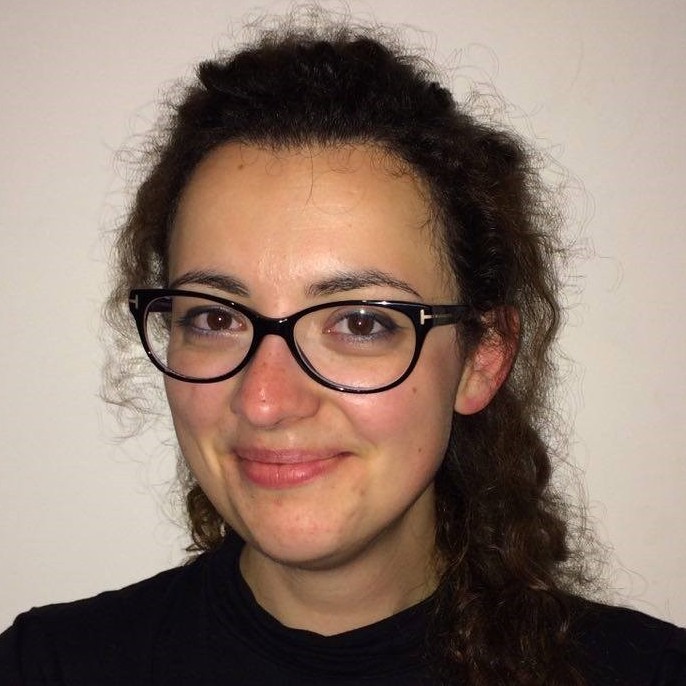
Title: Dissecting the molecular mechanisms underpinning T cell help for DC
PhD student: Elise Gressier (completed)
Dendritic cells (DC) often require stimulation from CD4+ T cells to propagate CD8+ T cell responses, but precisely how T cell help is delivered in vivo and how the interaction between CD40L and CD40 optimises the priming capacity of DC remains unclear. Building on previous findings showing that CD8+ T cell priming upon HSV-1 skin infection depended on DC receiving stimulation from both IFN-a/b and CD4+ T cells to provide IL-15, this project is designed to examine the molecular basis of how T cell help increases the priming capacity of DC. Using an in vitro system, we have observed several differential patterns of how DC respond to innate stimulation and T cell help. Interestingly, while innate stimuli, such as IFN-a/b, required at least 2-3h to induce cytokine and chemokine responses in the DC, amplification of these responses through CD40 ligation required less than 1h of CD40 stimulation, most likely even less. Ongoing work seeks to delineate the underlying molecular mechanisms and identify appropriate markers through which the provision of T cell help to DC can be resolved at the spatiotemporal level in vivo. This project will increase our understanding of the central aspect of DC-T cell interactions leveraging the molecular expertise in Bonn and the in vivo models available in Melbourne.


Title: Control of innate and adaptive immunity against Legionella pneumophila by Arf-GTPase exchange factors using in vivo infection systems
PhD student: Anastasia Solomatina (completed)
Legionella pneumophila is a ubiquitous environmental bacterium, which forms a specialised phagosome, called the Legionella containing vacuole (LCV), in free-living protozoa, but Legionella can also replicate in human alveolar macrophages, dendritic cells (DC) and epithelial cells. Murine macrophages are non-permissive in principle, but may be rendered susceptible by mutations in the host genome affecting control of the LCV, and this includes genes involved in cellular metabolism and lipid kinases. The Kolanus lab has generated knock-out mouse models for all four Arf-GTPase guanine nucleotide exchange factors (GEF) of the so-called cytohesin family. Arf-GTPases are required for proper intracellular vesicle transport, cell adhesion and lipid kinase signalling. Arf1 in particular is targeted by the Legionella virulence effector, RalF, which acts as an Arf GEF and, unusually for a bacterial protein, contains a Sec7 domain. RalF functions to recruit Arf1 to the LCV. As predicted from cell biology, myeloid-specific knock-out of cytohesin- 1 or -2 yield defective cell adhesion and in vivo cell recruitment functions in macrophages, DC and in neutrophil granulocytes, respectively. However, new evidence points to an important function of these molecules in the regulation of phagocytosis and autophagy in macrophages and DC. In the course of this project, we will explore the roles of Arf GTPase regulatory pathways in both innate and adaptive immunity against Legionella infection. We will employ in vivo infection systems of knock-out mouse models with subsequent mechanistic analyses at the cell level, using dynamic subcellular imaging and biochemistry. The project will thus yield a rich educational content for aspiring students at the scientific interface of immunology, cell biology and microbiology, and will further provide highly relevant basic research for potential future public health management.


Title: Interferon mediated control of intracellular bacteria
PhD student: Linda Rafeld (completed)
Legionella pneumophila is the major causative agent of Legionnaire’s Disease, which is a vastly under diagnosed infection estimated to cause around 10% of community acquired pneumonia. Although L. pneumophila is foremost an environmental organism, the ability of the bacteria to survive and replicate in amoebae has equipped the pathogen with the capacity to survive and replicate in human alveolar macrophages. Immunocompetent hosts generally respond to L. pneumophila infection through a robust innate immune response. We and others have shown that interferon g (IFNγ) is induced early after L. pneumophila infection and is crucial for controlling bacterial load in the lung. We recently showed that IFNγ production by memory T-cells was stimulated in an antigen-independent manner and drove clearance of the bacteria from the lung by stimulating the bactericidal activity of inflammatory monocyte-derived cells (MCs). In contrast, neutrophils did not require IFNγ to kill bacteria and alveolar macrophages remained poorly bactericidal even in the presence of IFNγ. The aim of this study is to investigate the molecular mechanisms by which IFNγ drives clearance of L. pneumophila from the lung. This work builds on our recent finding that monocyte derived cells are the primary responders to IFNγ production during L. pneumophilainfection and that IFNγ drives a bactericidal response by upregulating the expression of guanylate binding proteins (GBP) and immunity-related GTPases (IRGs). The specific aims of this proposal are to examine the contribution of IFNγ-induced Gbp1 and Irga6 to cell autonomous defence against L. pneumophila and in vivo clearance. In this aim we will focus on the mechanisms by which Gbp1 and Irga6 which restrict L. pneumophila intracellular replication. We will express Gbp1 and Irga6 in mouse macrophages, examine their coordinated effect on bacterial survival and create genetic deletions in macrophage cell lines to determine if these cells are more susceptible to infection. In addition, we will characterise the role of other GBPs and IRGs in the restriction of L. pneumophila intracellular replication. Other GBPs and IRGs upregulated by IFNγ will be assessed for their contribution to the restriction of L. pneumophila intracellular replication following similar in vitro approaches. In addition, we will generate GBP- and IRG-deficient mice to test the relevance of our findings in vivo.

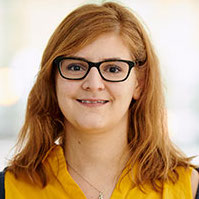
Title: Improving cross-presentation and vaccination by harnessing MAIT cells
PhD student: Marie-Sophie Philipp (completed)
Cross-priming is important for inducing cytotoxic CD8+ T cell responses against intracellular pathogens and tumours. In a collaborative effort between the Kurts and Godfrey laboratories, we recently showed that NKT cell and T helper cell-induced licensing of dendritic cells (DCs) endowed the DC with the capacity to produce distinct chemokines that attract naïve CD8+ T cells towards the cross-priming DCs. This work extends the classical paradigm of T cell activation by Bretscher and Cohn by referring to chemokines as “signal 0”, which acts on T cells before signal 1 (antigen) and signal 2 (costimulation). Like NKT cells, mucosa-associated invariant T (MAIT) cells are an abundant subset of invariant lymphocytes affecting various immune responses against pathogens. MAIT cells recognise bacterially metabolised agents presented by the MR1 molecule on antigen presenting cells. In this project, we propose combining Christian Kurts’ expertise on cross-priming with that of Dale Godfrey on invariant lymphocytes to study whether MAIT cells can license DC for cross-priming against subcutaneous and mucosal pathogens and to resolve how this affects the ensuing immune response. We will clarify how MAIT cells change the cell biological mechanisms by which DC handle antigen for cross-presentation, how they transcriptionally affect DCs, which chemokines are involved and how they affect the migration and interaction of the immune cells involved. Finally, we will test whether MAIT cells can be harnessed to improve vaccination against a mucosal virus infection.

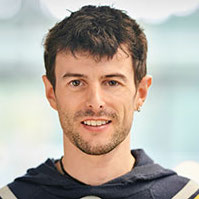
Title: Recognition of butyrophilin-family members by gamma-delta T cells
PhD student: Marc Rigau (completed)
Butyrophilins are a family of stimulatory molecules capable of modulating immune activity. While one type of butyrophilin (3A1) can activate human Vd2+ gamma-delta T cells in the presence of microbial derived phosphoantigen, the molecular mechanism by which this recognition takes place is unclear. Furthermore, there is growing evidence that several different types of butyrophilin and butyrophilin like molecules can be recognised by mouse and human gamma-delta T cells. Hence, we propose to experiment with different combinations of butyrophilin derivates and gamma-delta T cell lines to define which receptor type, binding affinity, and co-stimulatory molecules intervene in the activation of these cells. In the final year of the project in the Kurts laboratory, Germany, the influence of butyrophilin-reactive gamma-delta T cells on dendritic cell activation and cross priming will be examined. These results are of vital importance to better understand the potential of gamma-delta T cells in prospective medical applications.


Title: Systems analysis of paracrine effects after inflammasome activation
PhD student: Christina Budden (completed)
Myeloid cells like macrophages (MP) use several families of germline-encoded signaling receptors to recognize microbial pathogens and cell damage inflicted by pathogens. Among them, the inflammasomes are unique, as they are not triggering a transcriptional response, but a proteolytic cascade culminating in the activation of caspase-1, which cleaves precursor cytokines of the IL-1β family. However, inflammasome activation also induces the release of cellular proteins involved in inflammation and tissue repair. Additionally, inflammasome-activated MP undergo pyroptotic cell death and release their activated inflammasomes into the extracellular environment. While the activation mechanisms of inflammasomes and the activities of IL-1β family members have been extensively studied, little is known about how inflammasome- mediated unconventional release of proteins, pyroptotic cell death or the extracellularly released inflammasomes influences bystander cells, such as MP, endothelial cells or adaptive immune cells. Since inflammasome activation is important in the pathogenesis of multiple acute and chronic inflammatory disease, we here propose studying cell-to-cell communication between inflammasome-activated cells and surrounding innate immune cells, stromal cells and adaptive immune cells using a combination of systems biology, biochemical and cellular immunological approaches. The Latz and Hertzog groups have jointly generated inflammasome reporter mice critical for this and other projects of this IRTG, which allows visualizing local inflammasome activation in tissues using fluorescent microscopy. We will activate inflammasomes in vivo and analyse its influence in various tissues on cellular reprogramming and on adjacent stromal, myeloid and T cells. These in vivoactivation studies will be complemented by supernatant transfer experiments from inflammasome-activated MP to different types of recipient cells. We anticipate that we will uncover and characterise in detail novel functions of inflammasomes and provide a better understanding of how acute inflammatory reactions are turned off, how tissue repair can be induced by inflammatory triggers and how chronic inflammation may cause fibrotic tissue responses. Students will have the opportunity to learn various techniques from different disciplines such as imaging, cellular immunology, genomics and bioinformatics. The project will benefit from the complementary expertise in Melbourne (genomics, bioinformatics) and Bonn (imaging, inflammasomes).


Title: Post-transcriptional regulation of IFN-signaling
PhD student: Sarah Straub (completed)
The innate immune system is the primary defence mechanism of a host cell which acts against a variety of pathogens upon an inflammatory stimulus. The response needs to be tightly regulated to fight infections but avoid toxicity at the same time. The Hertzog lab recently performed HITS-CLIP and RNA-Seq experiments and reported more than 100 miRNAs, a large amount of which are novel, that are induced or repressed upon IFN-β-treatment in bone marrow derived macrophages (BMMs) and target major components of innate immune response, like TLR4, IFNAR1, STAT1, JAK1 or P2rx7. Additionally, their data revealed a change in the 3’UTR-length of many IFN-modulated transcripts, which leads to loss or gain of miRNA- and protein- binding sites. Differential binding of IFN-regulated miRNAs or RNA-binding-proteins can lead to amplification or reduction of the translation level and, as recent discoveries have shown, differential binding of 3’-UTRs by scaffold proteins like HuR can change function and location of the resulting protein. We want to validate the IFN-induced changes in 3’UTRs of different transcripts by RTPCR and characterise the mechanism of change by examining RNA binding proteins. In addition, we will characterise interactions of these novel miRNAs with their proposed targets using luciferase reporters and their implications on cell responses. We will investigate the effects of differential miRNA binding on components involved in IFN-signaling and inflammasome activation at mRNA- and protein-level and examine the biological effects. These findings will be put in context of global changes in the transcriptome induced by type-1 IFNs.

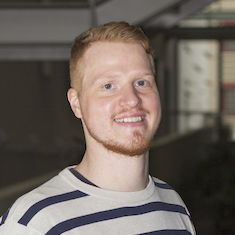
Title: Molecular regulation of suppressive lymphocytes and myeloid cells in non-lymphoid tissues
PhD student: Sebastian Liene (completed)
Immune suppression is important during homeostasis and inflammation to prevent organ damage. Foxp3+ regulatory T cells (Tregs) and other suppressive cells, e.g. myeloid de- rived suppressor cells (MDSCs), are critical for limiting damage during inflammation. Kallieshas demonstrated that thymus-derived (t) Tregs undergo further differentiation and specialization in the periphery, giving rise to specialized Tregs that produce IL-10 and home to non-lymphoid tis- sues. Recently, his lab showed that interleukin (IL)-33 and the transcriptional regulators IRF4 and BATF are important for the development of Tregs in the visceral adipose tissue (VAT), and preliminary data suggested that this molecular pathway is also required for other tissue-Tregs, in particular under inflammatory. Recent work by Ludwig-Portugall has shown that antigen-specific Tregs suppress auto-reactive B cells against tissue-specific antigen via PD-1/PD-L1. Further studies revealed that MDSCs suppress kidney inflammation. The present project combines her expertise on immunosuppression with that of Kallieson transcriptional control of lymphocyte differentiation, to examine the regulation of immune suppression in non-lymphoid tissues. We will focus on how tissue-derived cytokines such as IL-33 and transcription factors such as IRF4 and BATF regulate development and function of suppressive myeloid cells including DCs and MDSCs. We will examine the transcriptional and metabolic profile of DCs and MDSCs within inflamed tissue. We will study the impact of myeloid cells on differentiation, population expansion and function of tissue-specific Tregs. We will analyse the role of IL-33, IRF4 and BATF for the differentiation of tissue-specific Tregs in non-lymphoid organs such as skin, kidney or lung and define their molecular and developmental requirements. Finally, we will compare the influence of these regulators on thymus-derived tTregs on that on de novo peripherally induced Tregs (pTreg) to identify differences and commonalities in transcriptional, developmental and metabolic requirements.


Title: The interplay between IL-33 and steroid hormones links adipose tissue biology to organismal metabolism
PhD student: Santiago Valle Torres (completed)
The adipose harbors large numbers of diverse hematopoietic cells that control adipose tissue health and organismal metabolism. Regulatory T cells (Tregs) and type 2 innate lymphocytes (ILC2) play central roles in this cellular network by limiting adipose tissue inflammation. We and others have shown, that adipose tissue-resident Tregs and ILC2 express a unique set of surface molecules, including the IL-33 receptor, which was required for their development. Administration of IL-33 resulted in adipose tissue-specific population expansion of Tregs and ILC2 and improved metabolic parameters in obese mice. T cell receptor induced transcription factors IRF4 and BATF were essential for Tregs to adopt the IL-33 responsive state. We have now uncovered an additional layer of complexity in the molecular network controlling adipose tissue health. Hormones contributed to Treg and ILC2 differentiation and maintenance in a gender and adipose tissue-specific manner. This resulted in stark differences in the composition and function of the adipose in male and female mice that were at least in part Treg and ILC2 intrinsic. Using novel mouse models and molecular techniques we are currently unraveling the cellular and molecular components of the lymphocyte network that controls adipose tissue homeostasis and maintains healthy organismal metabolism.


Title: Cell-to-cell communication within the immune system studied in humans
PhD student: Patrick Günther (completed)
A hallmark of the immune system is its sophisticated cell-to-cell communication between different cellular subtypes including both the innate and the adaptive immune system. Utilising elegant murine genetic models and more recently intravital imaging has paved the way towards a better understanding of cell-to-cell communication in the immune system. Yet both approaches cannot be applied to understand cell-to-cell communication in the human immune system. Even more problematic, for several decades now we have studied human immune cell subtypes only after very efficient cell type purification thereby erasing cell-to-cell communication between different cell subtypes from the equation. We here propose to study cell-to-cell communication in human whole blood as a model organ in response to influenza A virus using a special whole blood culture system followed by flow cytometric isolation of cell subsets prior to further analysis. To model cell-to-cell communication, samples will be taken at different time points and subjected to genome-wide analysis of transcriptional regulation by RNA-seq and epigenetic regulation by ATAC-seq. Mathematical modelling of cellular interactions will be applied thereafter. For selected experiments, single-cell RNA-seq of CD45+ cells will be performed. Novel cell-to-cell communication ‘channels’ will be further evaluated in vivo together with Steve Turner (Melbourne) either in animal models or in whole bloods from influenza infected patients obtained as part of the influenza program in Melbourne. Overall, we anticipate bringing back the signal flow between different cell types during the onset of an immune reaction to the equation of immunological analyses in the human system. Moreover, the students will have the chance to learn approaches from at least two other disciplines (genomics, bioinformatics) in addition to immunological techniques. We will also make use of very complementary expertise in Melbourne by Stephen Turner (animal models of influenza infection, influenza-infected patient cohorts).


Title: Enhancer commissioning and decommissioning regulates lineage-specific transcriptional activation during virus-specific CD8+ T cell differentiation
PhD student: Vibha Uduba
Infection triggers large-scale changes in the phenotype and function of T cells that are critical for immune clearance, yet the gene regulatory mechanisms that control these changes are largely unknown. Using ChIP-seq for multiple histone PTM combinations, ATAC-seq for mapping genome wide chromatin accessibility and HiC for mapping higher order chromatin structures, we mapped the dynamics of ~26,000 putative CD8+ T cell transcriptional enhancers (TEs) and their contacts that are differentially utilised within ex vivo isolated naïve, effector and memory virus-specific CD8+ T cell during differentiation. We have demonstrated virus-specific T cell differentiation is underpinned by a combination of de novo TE gain and loss, maturation of the chromatin state via activation of “poised” TEs already present within naïve T cells, and specific transcription factor targeting of TEs that exhibit a non-canonical (H3K4me3+) chromatin signature upon differentiation. Our data also demonstrate that the chromatin structures within naïve CD8+ T cells are pre-configured at both the level of histone PTMs and higher order chromatin contacts. This genomic pre-configuration enables targeted maturation of lineage-specific genomic elements upon T cell activation, thus implying that the outcome of CD8+ T cell differentiation is largely pre-determined. These data have implications for the molecular events, and their regulation, that occur during the generation of effective T cell responses and establishment of immunological memory. Future projects will focus how distinct chromatin remodeling proteins and transcription factors regulate both higher chromatin structures and chromatin interactions during virus-specific T cell differentiation.


Title: Tissue-resident cytotoxic T memory cells in skin melanoma
PhD student: Maike Effern (completed)
Cytotoxic CD8+ T cells provide protection against certain recurrent viral infections such as herpes simplex virus (HSV) and also play an important role in the control of malignant tumours such as melanoma in the skin. The regulation of T cell effector functions against virally infected or transformed cells share many similarities. In fact, modern tumour immunotherapy targeting the PD1/PDL1 immune check point is rooted in part on insights gained in mouse models for viral infection. Currently, the exact cellular mechanisms involved in maintaining long-lived immune surveillance within peripheral tissues such as the skin are largely unknown. In order to address this important issue, this project combines our expertise in skin immunology/oncology (Tüting), skin immunology/virology (Gebhardt) and tumour biology/genome engineering (Hölzel). We will utilise and further develop genetically engineered mouse models that combine tumour biology and tumour immunology and involve immunotherapy approaches with tumour–specific cytotoxic CD8+ T cells. Employing this model, we will determine the role of a recently described population of permanently tissue–resident cytotoxic T memory (TRM) cells in melanoma growth surveillance. We will analyse the interactions between melanoma cells and melanoma–specific TRM cells and will define the role of professional antigen–presenting cells such as myeloid–derived epidermal Langerhans cells and dermal dendritic cells in local TRM cell activation and melanoma surveillance. While most of our work will rely on the use of well–defined genetic mouse models, we will validate key findings with patient material derived from skin biopsies and surgery specimens. Our results will provide novel insights into immune mechanisms underlying the long-term control of skin cancers, and as such will have the potential to identify innovative avenues for future immunotherapies.

Title: Melanoma immune surveillance in the epidermal niche
PhD student: Emma Bawden (completed)
Most cancers originate within epithelial tissues, including all carcinomas and melanoma. Of note, tissue-resident memory T cells (TRM) dominate immunity in these anatomical compartments, whereas circulating T cells are largely excluded from epithelial tissues in absence of inflammation. This implies an important role for TRM in epithelial cancer surveillance and this notion is further supported by emerging clinical data that link tumour-associated TRM with improved survival in cancer patients. Yet, a direct proof-of-principle for a protective function of TRM in cancer surveillance is missing. To address this issue, we have developed a model of transplantable B16 melanoma that approximates skin-contained tumour development and permits the analysis of CD4+ and CD8+ T-cell responses to model neoantigens. Importantly, this model recapitulates distinct disease stages seen in patients, including progressively growing or stably controlled tumours, as well as long-term persistence of melanoma cells in absence of macroscopic tumours. Of note, the latter two stages reflect the establishment of a local ‘melanoma-immune equilibrium’ that can be maintained for several months. We will use this model to dissect the role of circulating and skin-resident memory CD4+ and CD8+ T cells in long-term melanoma control. We will further define their protective effector functions and how these are regulated by epidermal and lymphoid-resident antigen presenting cells such as Langerhans cells, dendritic cells and myeloid cells. The overall goal of our studies is to reveal fundamental mechanisms in epidermal melanoma immune surveillance and as such, may provide new avenues for the improvement of current cancer immunotherapies.


Title: The cell biology of Alzheimer’s disease: amyloid-ß production and neuroinflammatory responses
PhD student: Alessandra Webers (completed)
Alzheimer’s disease (AD) is a chronic, multifactorial neurodegenerative disorder and the most prevalent dementing disease. Pathological characteristics of AD include extracellular deposition of β-amyloid (Aβ) and intracellular neurofibrillary tangles, believed to play an important role in the pathogenesis of this disease. Genome-wide analysis suggests that several genes that increase the risk for sporadic Alzheimer's disease encode factors, which either regulate endosomal sorting events or the inflammatory reaction. The APOE gene has been identified as the most significant genetic risk factor for late onset AD. The apoE protein is believed to affect AD pathogenesis through a variety of mechanisms, including effects on the blood brain barrier, the innate immune system, synaptic function and the accumulation of Aβ. Aβ deposition and abnormal tau protein cause loss of synaptic function, mitochondrial damage, activation of microglia, resulting in neuronal death. It is becoming increasingly evident that neuroinflammation mediated by primed microglia cells also contribute to AD pathogenesis, making neuroinflammation another important hallmark of AD pathology. The project aims to investigate the influence of neuroinflammation on Aβ production, in particular the impact of inflammatory cytokines on intracellular convergence of BACE and APP and Aβ production in primary neurons. This will be performed by investigating the impact of immunostimulated microglia supernatants on BACE1 and APP trafficking and Aβ production in cultured primary neurons. Mutant microglia for human AD risk genes will be obtained from APOE target replacement mice (APOE 2/3/4) and compared to wild type microglia in terms of function before and after immunostimulation. Supernatants of immunostimulated microglia will be used to identify and compare inflammatory cytokines, complement factors and ROS. Primary cortical neurons will then be subjected to these supernatants and APP processing, BACE1 promotor regulation, transcription and expression will be analysed. Furthermore, APP and BACE1 trafficking will be studied in the presence and absence of the described supernatants.

Title: The cell biology of the albumin- FcRn receptor recycling system
PhD student: Andreas Pannek (completed)
A major limitation of recombinant therapeutic proteins is their rapid turnover, which often restricts their use to therapeutic treatment rather than prophylactic application. Given these limitations in protein therapeutics, there has been renewed interest in the neonatal Fc receptor (FcRn) which is responsible for the unique long serum half-life of not only immunoglobulin G (IgG) but also albumin. FcRn selectively protects IgG and albumin from intracellular degradation and prolongs the half-life of these serum proteins in adults by 5-6-fold. FcRn binds to the IgG Fc domain and albumin via independent binding sites in acidic endosomal compartments and then recycles bound ligands back to the cell surface for release into the circulation. In collaboration with CSL colleagues, we have established cell systems to analyse the itinerary of FcRn, both in transfected cell lines and in primary cells. Our findings have identified the motifs in the cytoplasmic tail of FcRn for intracellular sorting to recycling endosomes to divert the receptor away from the lysosomal pathway. We have also demonstrated macropinocytosis is a major pathway for uptake of albumin in macrophages. Nonetheless, many fundamental aspects of the cell biology of FcRn and ligand recycling remain poorly defined. The relative contribution of different primary cells in the body to FcRn-mediated ligand recycling is not known; an important question given differences in the intracellular transport pathways of different specialized cells. Moreover, there is a paucity of information on the ligand uptake pathways, recycling of albumin fusions, in vivo FcRn interactions, impact of ligand size on recycling efficiency and the relevant primary cells responsible for recycling. Knowledge of the FcRn-ligand sorting events in the early and recycling endosomes is fundamental to rationally optimise therapeutic recombinant proteins. The aim of this research proposal is to identify the internalization and recycling itinerary of FcRn ligands in a range of primary cells, and to identify the intracellular sites of interaction of albumin with FcRn as a basis for understanding differences in ligand recycling efficiencies.


Title: Structural basis of NLRP1 inflammasome formation
PhD student: Jonas Möcking (completed)
As part of the innate immune system, inflammation plays a major role in defending the human body against pathogens. Cytosolic sensors known as NOD-like receptors (NLRs) recognize different stimuli caused by invading pathogens and can trigger an inflammatory response. Upon activation, these proteins assemble into oligomeric complexes and recruit the adapter protein ASC (Apoptosis-associated speck-like protein containing a CARD). Multiple ASC molecules form speck-like filaments and can bind and activate Procaspase-1. Active Caspase-1 is responsible for the cleavage of Pro-IL-1b and Pro-IL-18, ultimately resulting in inflammation and a form of cell death called pyroptosis. Within the family of NLRs there are four different subgroups, the NLRAs, NLRBs, NLRCs, and NLRPs. NLRP1 was the first member of the NLRPs to be discovered. The domain architecture of NLRP1 differs from other members of the NLRP subgroup. Apart from the typical N-terminal PYD, NLRP1 contains a C-terminal FIIND and CARD domain1. Both, the PYD and the CARD, are known to be effector domains in NLRs. However, it has been shown very recently that for NLRP1 only the CARD domain is able to trigger the activation of Caspase-1. Contrary, the PYD has an autoinhibitory effect on NLRP1 function 2. Using recombinant expression of full length human NLRP1 as well as separate domains in baculo virus infected Sf9 cells or bacterial E.coli cells we aim to generate structural data to understand the underlying mechanisms of NLRP1 activation and ASC and Caspase-1 recruitment. To this end, methods like protein crystallization and electron microscopy are applied. Additionally, biochemical assays like the malachite green assay are used to investigate the importance of ATP as a cofactor in activating NLRP1. One of the challenges that arise is the fact that the activating trigger for human NLRP1 has not been discovered yet.

Title: Structure function studies of the Pyrin inflammasome
PhD student: Annemarie Steiner (completed)
We recently identified a new disease caused by a mutation in the innate immune receptor Pyrin, which results in a severe chronic inflammation (Masters et al, Sci Trans Med 2016). This mutation prevents phosphorylation of S242, and binding of 14-3-3. Normally, 14-3-3 is bound to inhibit the Pyrin “inflammasome”, a protein complex that produces the cytokine IL-1b. The mutation increases activation of the inflammasome, and therefore the patients have now been treated by blocking IL-1b. In this project we will study the function of Pyrin with regard to the domains that activate the inflammasome, and how 14-3-3 acts to prevent complex formation. This will be integrated with information from patient mutations. The three dimensional structure of Pyrin together with 14-3-3 in the inactive conformation, and with the S242 mutation in an active conformation will also be generated to provide greater detail. This will involve protein biochemistry techniques for modifications and purification, followed by structural analysis. Based on these results we will perform additional functional studies to confirm the basis for Pyrin activation, with relevance for chronic inflammatory diseases, and infectious pathogens that trigger the Pyrin inflammasome. This project is a collaborative effort between the Walter and Eliza Hall Institute and the University of Bonn, supported by the Bonn & Melbourne Research and Graduate training group (IRTG2168). The student will perform 2 years research in the laboratory of Dr Seth Masters at WEHI, and 1 year in the laboratory of Dr Matthias Geyer at the University of Bonn (Germany). The Masters laboratory studies innate immunity based on investigations of genetic changes that result in inflammatory diseases. This is mostly focused around a family of innate immune receptors that can form inflammasome complexes and trigger production of the potent inflammatory cytokine IL-1b. The Geyer lab is interested in the molecular mechanisms that govern immune receptor activation. This incorporates a variety of techniques from molecular biology and biochemistry to structural biology to analyze interaction between proteins, RNA, lipids, and ligands.
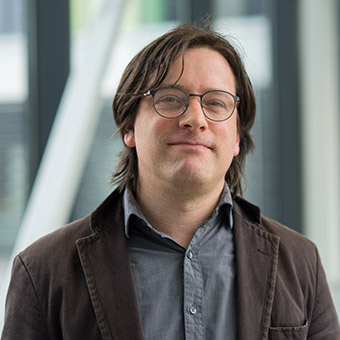

Title: Nucleic acid sensing by T cells during HIV-1 infection
PhD student: Marvin Holz (completed)
Receptors of the innate immune system sense foreign molecules and structures such as the highly conserved microbe-associated molecular patterns (MAMPs) like sugars, lipids or proteins, which occur only on microbes like bacteria, fungi or parasites. Since viruses use the biosynthesis machinery of the infected (host) cell itself, they do not incorporate completely foreign molecules. Therefore, viruses are predominantly recognised by unusual localisation, structure or modification of their nucleic acids. Stimulation of innate nucleic acid sensing immune receptors trigger cell-autonomous antiviral defence mechanisms, which may also include apoptosis, and secretion of cytokines and chemokines, which lead to alarming of neighbouring cells and attracting immune cells, in this way initiating adaptive immune responses. The human immunodeficiency virus 1 (HIV-1) is a lentivirus causing Acquired Immune Deficiency Syndrome (AIDS) with fatal outcome in humans if left untreated. A small cohort of patients, so called elite controllers, are able to limit progression of AIDS in absence of antiretroviral therapy (ART) due to their capacity to raise a rapid and sustained IFN-a/b response in dendritic cells, indicating that the antiviral IFN-a/b response also interferes with HIV-1 replication. Although, ART which directly target different processes during HIV replication has led to a substantial reduction in morbidity and mortality, the major barrier to curing HIV is the long-term persistence of latently infected resting memory T-cells in HIV-infected patients. Such latently infected T cells express HIV-1 RNA, which was described to stimulate nucleic acid receptors in principle, but have no upregulated IFN-a/b induced genes, raising the question, if present RNA sensor pathways (e.g. RIG-I) are suppressed in those cells by viral or endogenous epigenetic regulation. Although nucleic acid receptors are well studied in somatic and myeloid cells, their presence and function in T cells is poorly defined. The aim of this project is to analyse the response of T cells to nucleic acid receptor stimulation and if HIV-1, especially in latently infected T cells (which express viral RNA), counteracts such viral recognition mechanisms. Conversely, the effect of transfected immunostimulatory nucleic acids on re-activation of latently HIV-1 infected cells will be analysed.



Title: Nanoparticle delivery of molecular agents to tackle HIV latency
PhD student: Abdalla Ali (completed)
Antiretroviral therapy (ART) is currently only capable of controlling HIV-1 replication but not completely eradicating virus from HIV-infected individuals. Even after prolonged therapy, if treatment is stopped, virus rebounds. Many reservoirs of replication competent HIV-1 virus have been identified but the most important are long lived latently infected CD4+ T cells. One approach toward tackling HIV-1 latency is the activation of HIV viral production by latency reversal agents (LRAs) such as Histone deacetylase inhibitors, HDACi, Bromodomain Inhibitors and PKC agonists. Virus production will lead to virus mediated cytolysis or clearance through immune recognition (often called “Shock and Kill”). However, LRAs are not specific for HIV, have off target effects and lack sufficient potency to eliminate infected T cells. Nanoparticle delivery systems possess several advantages over more traditional drug delivery methods but there are challenges for uptake of nanoparticles in resting T-cells, the major reservoir of latent HIV. Preliminary work in our laboratories has investigated whether biocompatible polymer nanoparticles could be successfully delivered to a CD4+ T cell line. Nanoparticles <300nm were successfully taken up by CD4+ T cells. Using a LIVE/Dead violet stain that binds to the amine groups in nanoparticles, we could distinguish particles within and on the outside of cells. In this project, we aim to develop biodegradable biopolymer nanoparticles to deliver latency reversing agents to resting CD4+ T cells. We will systematically determine the effects of size on nanoparticle uptake and will demonstrate the location of the nanoparticle using imaging flow cytometry and confocal microscopy. We will then load these nanoparticles with the HDACi romidepsin and PKC agonist bryostatin and determine the effects on latency reversal compared to free drug. Finally, we will optimise nanoparticles delivery of HIV RNA to resting CD4+ T cells to determine the effects of HIV RNA on the innate immune signalling pathway.